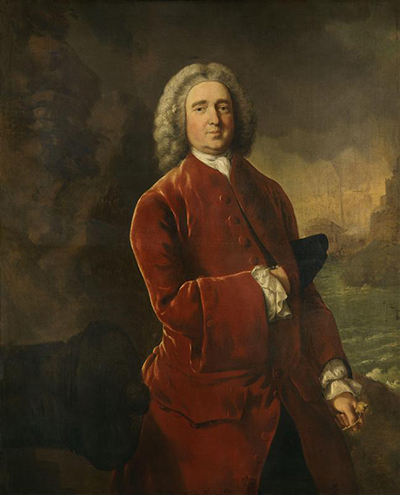The gentleman in this portrait may not be instantly recognisable to us today. Yet three centuries earlier, he was a public figure. The 18th-century portrait painter Thomas Gainsborough brings before us a man of distinguished appearance, with a gentlemanly demeanour and a look of humour about the eyes and lips.
People generally looked solemn in their portraits. Paintings were the photography of their time. People who were important enough to have their portraits painted wanted to be taken seriously by the people who would study these paintings to learn about them. Yet this gentleman looks as if he's about to break into a smile. Perhaps he and the painter had a nice, easy relationship full of good humour and joviality. The background of the sea gives us a clue about the man’s identity. He was Admiral Edward Vernon, an officer of the English Navy.
It has come down to us from history that the Admiral's nickname was Old Grog, which refers to the fact that he was fond of wearing coats made of grogram cloth. That cloth was a combination of wool and silk. The Admiral was also known for having introduced diluted rum to the Navy, which came to be known as grog. However, he's mostly remembered for his distinguished career, both as a Naval Officer and a politician. He served three times as a Member of Parliament at Westminster. He was particularly outspoken on Naval matters, which made him quite a controversial figure.
Thomas Gainsborough was, in his own way, no less distinguished than his noble sitter. He was one of the leading portrait painters of his day. His nearest rival was Sir Joshua Reynolds. His time was the second half of the 18th century. This portrait was painted around 1753, in oils on canvas. It features in the primary collection of the National Portrait Gallery in London. In addition to being a portrait painter, Gainsborough was also a noted landscape painter. In fact, he’s considered by many to be one of the greatest of the British landscape painters. Gainsborough had the distinction of being one of the founding members of the British Royal Academy. He left as a legacy a distinguished body of work, which is admired three centuries later.




